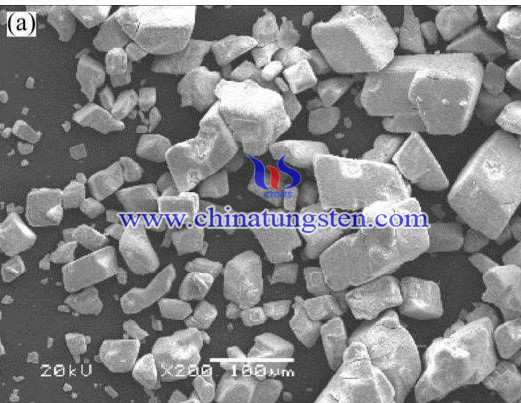Dissolving Behavior of Ammonium Paratungstate
- Details
- Category: Tungsten Information
- Published on Thursday, 29 October 2020 00:51
Ammonium paratungstate (APT) is an important intermediate in the process of tungsten metallurgy. With APT, most tungsten products can be produced. The conventional methods for most of the commercial production of APT are caustic soda leaching and soda ash leaching.
But these methods consume a large amount of auxiliary materials and generate a lot of wastewater, leading to a serious environmental pollution. The main reason is that, a mass of high salinity wastewater generated in the conversion process of sodium tungstate solution, and ammonia nitrogen wastewater created in the evaporative crystallization, are difficult to handle and unable to recycle economically. So, these methods are difficult to meet the requirements of modem tungsten industry, due to the increasingly strict environmental protection provisions.

The evaporative crystallization of APT and other tungsten compounds from ammonium tungstate solution is an important operation in tungsten metallurgy. Therefore, better understanding the dissolution/ precipitation behavior of APT and other tungsten compounds in ammonium tungstate systems, is vitally important for efficient operation and product quality control in evaporative crystallization.
The dissolving behavior of ammonium paratungstate can be concluded as follows:
- A rising temperature, prolonging duration, increasing ammonia concentration, and decreasing ammonium carbonate concentration favor dissolving of ammonium paratungstate at temperature below 90 °C, while the WO3 concentration decreases after a certain time at temperature above 100 °C.
- Furthermore, the undissolved tungsten exists in the form of either APT·4H20 below 90 °C or pyrochlore-type tungsten trioxide above 100 °C. In dissolving process, the ammonium paratungstate dissolves into paratungstate ions followed by partially converting to tungstate ion, resulting in the coexistence of the both ions. This study may provide a new idea to exploit a novel technique for manufacturing ammonium paratungstate and pyrochlore-type tungsten trioxide.
- APT Manufacturer & Supplier, Chinatungsten Online: ammonium-paratungstate.com
- Tungsten News & Prices of China Tungsten Industry Association: www.ctia.com.cn
- Molybdenum News & Price: news.molybdenum.com.cn
- Tel.: 86 592 5129696; Fax: 86 592 5129797; Email: sales@chinatungsten.com